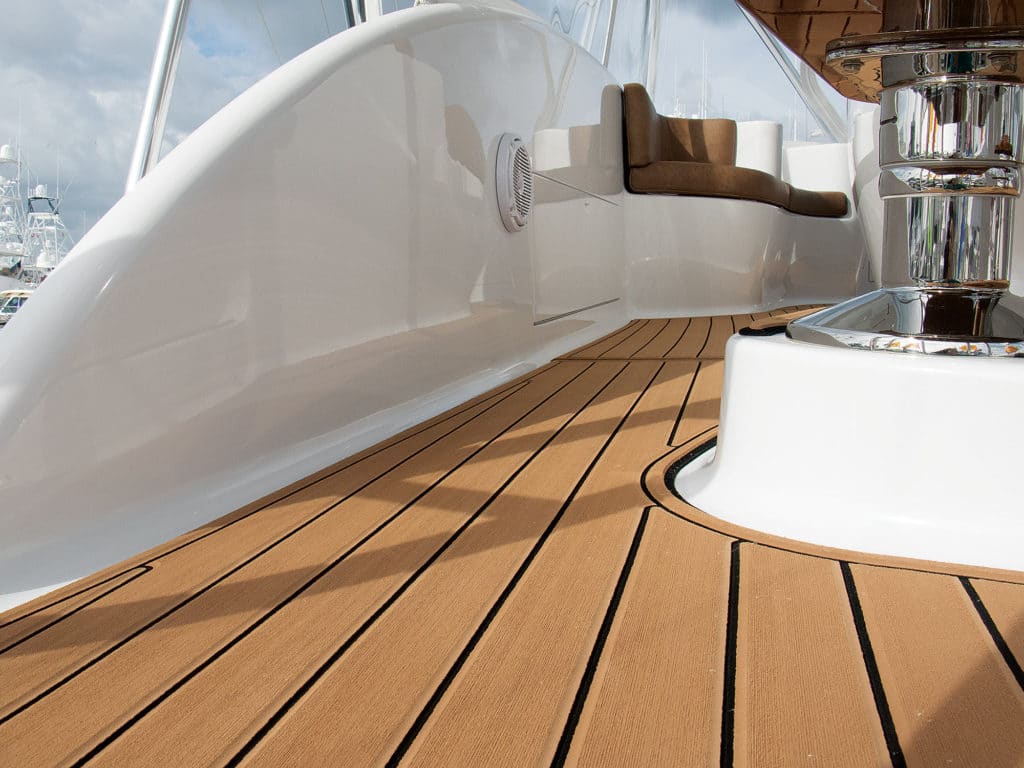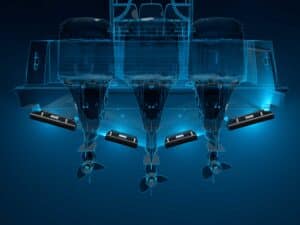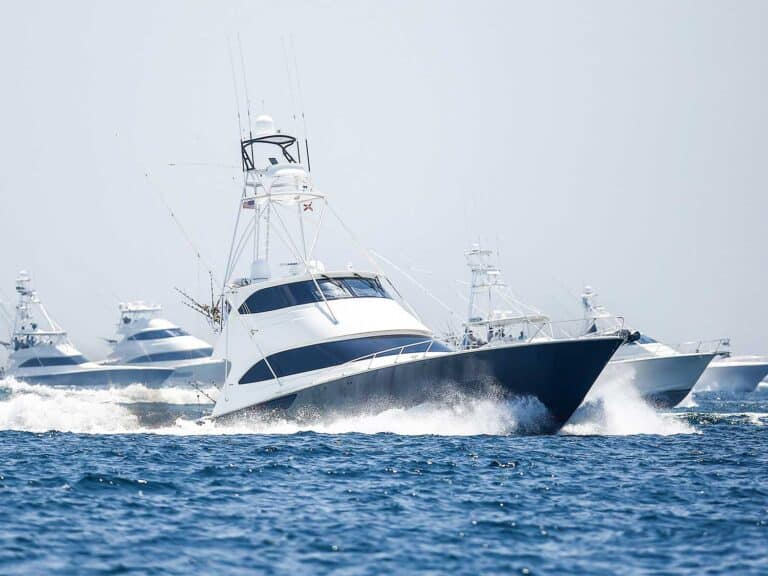
“Do you remember the days when boats had carpet on the bridge?” a salty old captain asked me one day while trolling off the coast of North Carolina. “Man, that stuff used to get gross from the water and what-not offshore,” he said. And while it was functional in terms of providing better footing and some padding, I laughed to myself and was thankful that the carpet fad had come and gone. It’s rare to see carpet on the bridge these days, but that doesn’t mean there aren’t some alternatives to nonskid on different areas of the boat, especially on the bridge, that still fit into the clean overall look of a modern sport-fisher.
It was a year or so ago when I stepped aboard Flight Plan, one of the recent splashes from Spencer Yachts, to find a new flooring option on the bridge: SeaDek. And while I had seen the product on swim platforms of wakeboard boats and on poling and casting platforms of flats skiffs, it was the first time I’d seen the closed-cell EVA product on the bridge of a sport-fisher. It caught my eye, and for good reason, as the faux teak pattern tied together the overall look of the soft goods found on the helm chairs and other seating areas on the bridge.
“Flight Plan was the first boat we did the SeaDek option on,” says Daniel Spencer, vice president of Spencer Yachts. “The owners saw it on another application and came to us with the idea. We said we could do it, and we were very pleased with the outcome. We have learned a lot about it since then, and I’ve got a couple boats now that will also have it on the bridge. A set of pads is actually here at the shop, ready to be installed.”
On Your Feet
“I tell you the truth, I really like it. And until you fish on a boat with it, you won’t appreciate it for anything more than just the looks. We grew up charter fishing on boats that had carpet on the bridge — and of course we can’t put carpet on these custom boats today. One of the benefits compared to carpet is SeaDek doesn’t hold water and can just be chamoised when it gets wet,” Spencer says.
“When you go fish two to three tournaments back-to-back-to-back and are traveling from one place to another with that boat and standing up on the bridge for 12 hours a day for four to five days in a row and then right back at it in the next tournament — it’s really a blessing on your feet up there as the captain,” Spencer continues. “But it’s not just about comfort for a captain, I think it also makes the bridge safer to walk around on. When you’re running and traveling all day — it’s inevitable that you’re going to get a bunch of salt on the bridge — and even with boat shoes, the nonskid can get slippery. You don’t seem to get that with the SeaDek product.”
The Product
Spencer enlisted the services of Florida-based Castaway Customs to help design the flooring on Flight Plan and the four subsequent builds that have opted for SeaDek padding. “They come up to the shop and use a machine with integrated CAD software to trace the design of the bridge. The digitizing process is relatively quick, and it only takes them about 30 minutes to knock out a bridge for us. Then they head back to their shop and make a template to design the flooring. From there, they can add the patterns, colors and logos, and make the padding for us that will fit the exact dimensions of the bridge. They ship it to us in different pieces, and the guys here at the shop install it,” Spencer says.
Tyler Shealey from Castaway Customs explained the process of how the SeaDek material takes shape. The material is sent to them from the SeaDek factory with the different layers preglued together. In most cases, especially when going for the faux teak look on a bridge, there are two different colors — mocha over black. The pattern is then cut by a CNC machine at his shop, which creates the teak lines by cutting away the entire top layer as specified by the computer-based design. At this point, the company can also add the boatbuilder’s logo, boat name or really any other logo into the material to add a customized look and feel. The underside is a 3M high-bond pressure adhesive that is then easily applied to the bridge floor. When SeaDek is applied, Spencer does not apply a nonskid finish to the bridge flooring in order for a better bond with the adhesive on the underside of the SeaDek.
The SeaDek comes in a variety of thicknesses depending on the application. And while the flooring typically comes in two different thicknesses, a 6 mm option and an 8 mm option, Spencer prefers to install the thicker of the two because it looks more like teak and he feels it is much softer on the feet.
The SeaDek material comes with a standard three-year warranty for material and workmanship and is expected to last five to seven years with essentially no maintenance other than routine cleaning. Up on the bridge under the hardtop and away from the action in the cockpit, the material could have an even longer lifespan.
If something should ever happen to one of the pads, Castaway Customs and several of the other installers keep the pattern on file so they can easily make another piece to meet the exact dimensions of the damaged section. A quick swap and you’re ready to go.
This is also important for owners when the boat is put on the market and sold to a new owner. Because all the pieces are on file, any logo work on the padding can easily be changed to the new boat name, or the entire color scheme can be changed if the color of the boat or the soft goods on board are changed.
Modifying an Older Boat
And while the padding options look beautiful in a new build, SeaDek can also be added to older boats to give a revitalized look to both the bridge as well as the cockpit — especially on boats without a teak sole. Shealey also commented that some of the older boats he has done work on will add bolster padding — the SeaDek material can be produced to a thickness of nearly 1 inch — which can be a good alternative should someone be in the market for new upholstery.
Parting Thoughts
“As sport-fishing people, we’re always scared of the dark until we see it somewhere else. We’re always slow to change and embrace new ideas, but this is definitely a good one,” Spencer says. The SeaDek flooring, and similar products on the market today, isn’t an option for everyone, but it certainly looks good and serves a purpose for both comfort and safety on the bridge.







